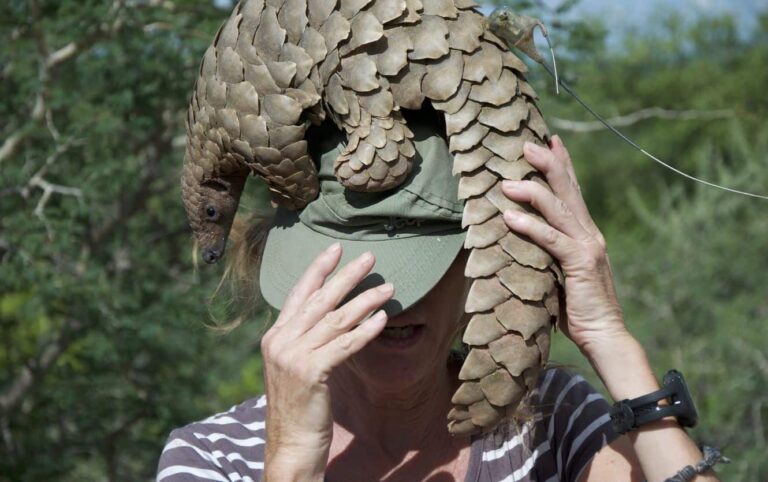Share with friends:
Well, quite a number of meat delicacies served in different parts of the world today are clearly forbidden foods in the Bible. They are Biblically unfit for human consumption!
The delicacies in question are derived from pigs, cats, bats, lizards, monkeys, dogs, snakes, eagles, owls, rabbits, and pangolins!
These and other wild animals have become intermediary hosts to diseases that are now commonplace in the 21st century.
According to WHO,
more than three quarters of the human diseases that are new, emerging or re-emerging at the beginning of the 21st century are caused by pathogens originating from animals or from products of animal origin.
Zoonotic diseases in the Bible and today
The zoonotic diseases as they are clinically known, have been with humanity for as long as anyone can remember – even in the Bible.
5 of the famous 10 plagues in the Bible were somehow zoonotic.
Modern-day zoonotic cases and most likely coronavirus strains first became apparent in the 20th century, when they presented with symptoms such as the flu and minor body pain.
Fast forward to the 21st century, they have mutated to acute respiratory and pneumonic medical conditions.
One such disease is Covid-19 which continues to kill thousands around the world.
And back to the Bible, we are reminded of how diseases in the future will be spread by animals.
So I looked, and behold, a pale horse. And the name of him who sat on it was Death, and Hades followed with him. And 6power was given to them over a fourth of the earth, pto kill with sword, with hunger, with death, qand by the beasts of the earth.
The forbidden foods in the Bible
Yes, some foods cut out from WILD animals are not meant to be eaten by humans, let alone domesticated.
In Leviticus 11, the Lord said to Moses and Aaron about these animals:
There are some that only chew the cud or only have a split hoof, but you must not eat them. The camel, though it chews the cud, does not have a split hoof; it is ceremonially unclean for you. 5 The coney, [1] though it chews the cud, does not have a split hoof; it is unclean for you. 6 The rabbit, though it chews the cud, does not have a split hoof; it is unclean for you. 7 And the pig, though it has a split hoof completely divided, does not chew the cud; it is unclean for you
… on and on Leviticus pens down the unclean animals!


A journey through unclean animals & ZOONOTIC diseases
In order to make sense of the impact of the animals mentioned above, let us go through SOME coronavirus strains and diseases related to them.
1. Ebola virus
The Ebola virus is believed to have originated from fruit bats and monkeys and is transmitted to humans through close and direct contact!
The virus spreads to people initially through direct contact with the blood, body fluids and tissues of animals.
CDC
It will present with symptoms such as fatigue, red-eye, malaria, typhoid, cholera, meningitis, hepatitis, and other hemorrhagic fevers.
The virus was first reported in 1976 in DRC, and later in Sudan, Uganda, and a couple of west African countries. Other outbreaks occurred in 2014, 2016, 2018.
Ebola is still infecting new victims today probably because of our continued interactions with primates and bats.
There is no treatment for Ebola, a disease that has killed over 15,000 people worldwide.
2. Severe acute respiratory syndrome (SARS)
The SARS coronavirus strain (SARS-CoV) was first discovered in 2003. By then, it had reportedly infected people in the Chinese Guangdong province from as far back as 2002.
The true source of SARS is not clear enough but is believed to have originated from the civet bats and dogs!
Exotic animals from a Guangdong marketplace are likely to have been the immediate origin of the SARS-CoV that infected humans in the winters of both 2002-2003 and 2003-2004. Marketplace Himalayan palm civets (Paguma larvata) and racoon dogs (Nyctereutes procyonoides) harbored viruses highly similar to SARS-CoV (31).
Journal of Virology
The SARS strain was transmitted from one person to another through close and direct contact.
The symptoms of SARS included headaches, fatigue, unease, diarrhea, and shivering. These were followed by acute pneumonia, respiratory failure, and death!
Over 700 people died from SARS-Cov. The good news is that no new cases of the strain have been reported since 2004.
3. Middle East respiratory syndrome (MERS)
The Middle East Respiratory Syndrome (MERS-Cov) is a coronavirus strain discovered in 2012 in Saudi Arabia. The strain largely affected people in the Middle East and led to 600 deaths as of 2016.
It is believed that MERS originated from the horseshoe bat, which passed on the virus to the dromedary camel.
MERS found its way into the human body through, close and direct contact and probably eating:
the dromedary camel (Camelus dromedarius) is a host species for the MERS-CoV and that circulation of MERS-CoV or MERS-like CoV in dromedaries in Africa and the Arabian Peninsula were occurring well before 2012 [10].
MERS can manifest in acute respiratory syndromes such as shortness of breath, cough, fever, muscle weakness, and diarrhea.
Severe symptoms can lead to shock, organ failure, and ultimately death.
At a fatality rate of 34%, about 1000 people had died of MERS-Cov as of 2020.
4. COVID-19 (SARS-CoV-2)
Covid-19 or SARS-Cov-2 is the latest in the queue of coronavirus strains. It is arguably the deadliest respiratory disease since the Spanish flu (H1N1 virus) in 1918.
The first symptoms and suspect cases of Covid-19 were reported in the city of Wuhan in December 2019. As of late 2020, nearly all countries across the globe had reported cases and deaths due to the virus strain.
The general scientific view is that Covid-19 was passed to humans through the horseshoe bats!
Current evidence suggests that SARS-CoV-2 emerged from an animal source. Genetic sequence data reveals that SARS-CoV-2 is a close relative of other CoV found circulating in Rhinolophus bat (Horseshoe Bat) populations.
Questions and Answers on COVID-19
Another line of thought points to the pangolin as the original reservoir of Covid-19!
Researchers in Guangzhou, China, have suggested that pangolins — long-snouted, ant-eating mammals often used in traditional Chinese medicine — are the probable animal source of the coronavirus outbreak
nature
Death due to Covid-19 stood at 4,400,000+ as of August 2020.
Food for thought:
Are the forbidden foods in the Bible taboo to Jews only?
Of course, one can argue the list of forbidden foods in the Bible is taboo for the Jews only since the Lord asked Moses and Aaron to specifically talk to Israelites.
But again the coincidences of modern-day pandemics visa viz zoonotic diseases should leave us thinking hard and deep. Why only animals – and wild ones in particular?
Consider extended consequences:
When humans are infected, they transmit these viruses to innocent pets and domesticated animals at home!
A small number of pet cats and dogs have been infected with the virus in several countries, including the United States. Most of these pets became sick after contact with people with COVID-19.
Covid-19 and Animals
Further still, the HEAVY impact of Covid-19 is probably setting the stage for a new world order something many people are probably not comfortable with!
Anyway, just thinking aloud!


0 Comments